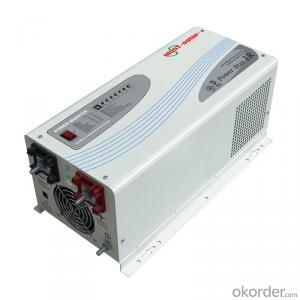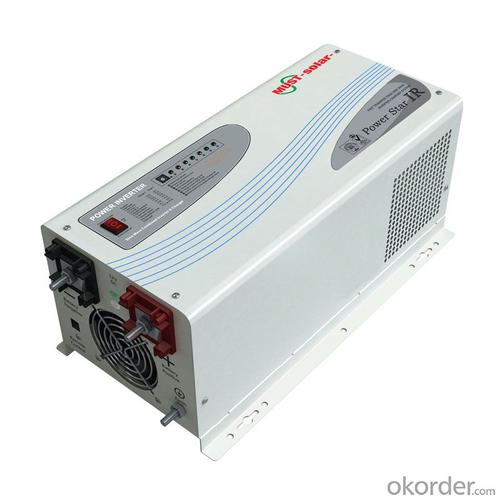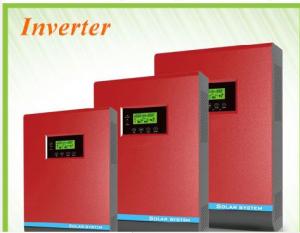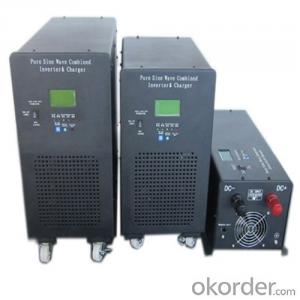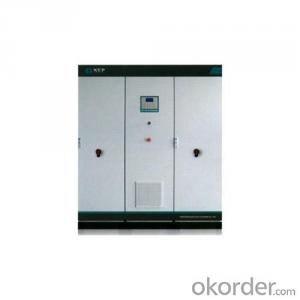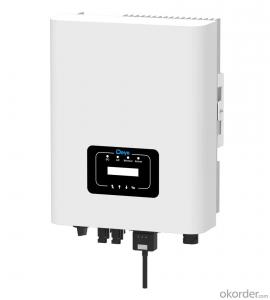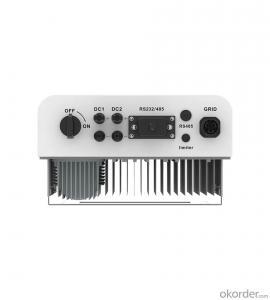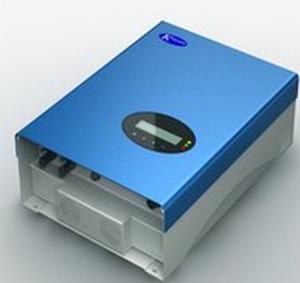T.A. Solar Inverter - PWM/MPPT Solar Inverter 1000W - 6000W Reliable
- Loading Port:
- China main port
- Payment Terms:
- TT OR LC
- Min Order Qty:
- 100 pc
- Supply Capability:
- 1000 pc/month
OKorder Service Pledge
OKorder Financial Service
You Might Also Like
Pwm/mppt Solar Inverter1000W -6000W Reliable
Features :
1. High overload ability of our EP3200 charger is up to 300% rated power
2. EP3200 pure sine wave inverter adopts low quiescent current, and power saver mode to reduce power consumption to 3W . It can extract max. power from various batteries with different protections, and low voltage trip can be selected (10V/10.5V/11V).
3. Uses PFC (power factor correction) for charger, which has less power consumption than conventional units.
4. It has 10s delay before transfer when AC resumes, and overload protection when our APC pure sine wave inverter equips with generator.
5. 10ms typical transfer time between battery and AC, which guarantees power continuity of EP3200 charger. Uses selectable input AC voltage (185-265V or 155-255V) for different kinds of loads.
Specification:
| Rated Capacity | 4000W | 5000W | 6000W | |
| Efficiency | >90% | |||
| Input | ||||
| Model | 120v Models | 230v Models | ||
| Nominal Voltage | 100V/110V/115V/120VSelectable | 200V/220V/230V/240V Selectable | ||
| Output | ||||
| Rated Power | 4000W | 5000W | 6000W | |
| Output Voltage | 100V/110V/115V/120V Selectable | 200V/220V/230V/240V Selectable | ||
| Voltage Waveform | Pure Sine Wave | |||
| Crest Factor | 3:1 | |||
| Transfer Time | Transfer Time : AC To DC : 10ms (Typical) Transfer Time : DC To AC : 10ms(Typical ) | |||
| Max Bypass Overload Current | 30A | |||
| Input | ||||
| Nominal Voltage | DC24V/48V | DC48V | DC48V | |
| Over Current Protection | By Re-Settable Over Current Protector | |||
| Output | ||||
| Regulation (Nominal) | ±10% Typical Of Nominal Voltage | |||
| Nominal Input Voltage | 230Vac | |||
| Input Voltage Range | 185-265Vac | |||
| Nominal Output Voltage | According To The Battery Type | |||
| Nominal Charge Current | 30Amp-70Amp | |||
| Battery Type | Lead-Acid 12Ah ~ 250Ah | |||
| Typical Backup Time | No Limit | |||
| Charging Method | Smart Pulse Charging With Two Charging Modes: Quick Charging When Battery Is Not Fully Charged, Trickle Charging When Battery Is 90% Fully Charged. | |||
| Average Charging Current | 65A/35A | 70A/40A | 50A | |
| Battery Voltage options | ||||
| Options 7 | Battery low trip to bypass 11v , high trip to battery 14v | |||
| Options 8 | Battery low trip to bypass 10.5v , high trip to battery 13.5v | |||
| Options 9 | Battery low trip to bypass 10v , high trip to battery 13v | |||
| Communications & Management | ||||
| Control Panel | LCD/LED Option | |||
| Audible Alarm | Alarm On Battery: Low Battery & Battery Over Voltage Alarm On Abnormal Operation: Over Load, Short-Circuit, & Over Heat | |||
| Environment And Safe | ||||
| Operating Temperature | 0℃ To 40℃ (32℉ To 104℉) | |||
| Transit/Storage Temperature | -15℃ To 60℃ | |||
| Audible Noise | 60 Dba Max at 1m | |||
| Quality Control System | ISO 9001,FCC,CE | |||
| Physical | ||||
| Dimensions: (H×D×W) | 755*320*310mm | |||
| G.W (Kg) | 37.5 | 47.5 | 47.5 | |
| Packing | Export Carton For Each Unit Per Carton | |||
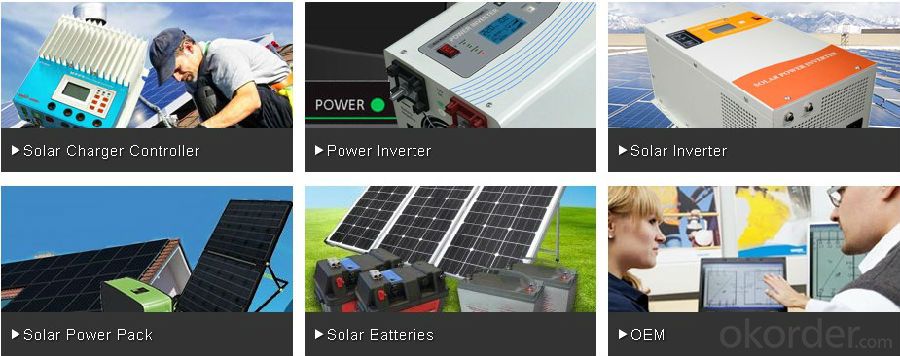
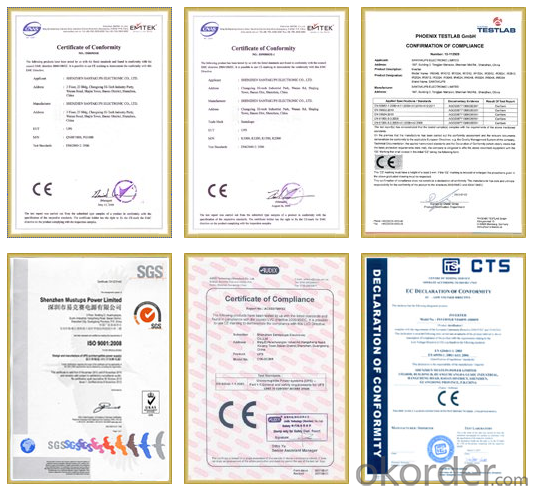
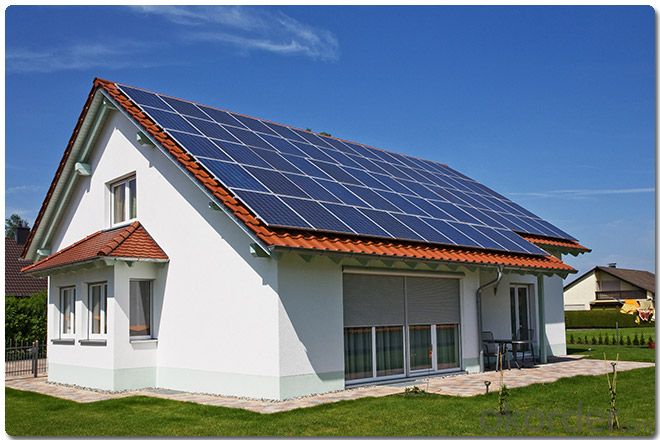
Warrenty
provides a 1~3 year limited warranty (“Warranty”) against defects in materials and workmanship for its Uninterruptible power supply, Power inverter/chargers, Solar charge controllers, Battery Products (“Product”).
The term of this Warranty begins on the Product(s) initial purchase date, or the date of receipt of the Product(s) by the end user, whichever is later. This must be indicated on the invoice, bill of sale, and/or warranty registration card submitted to MUST-Solar. This Warranty applies to the original MUST-Solar Product purchaser, and is transferable only if the Product remains installed in the original use location.
FAQ
1. How fast will my system respond to a power outage?
Our solar inverters typically transfer to battery power in less than 16 milliseconds (less than 1/50th of a second).
2. What kind of batteries do the systems include?
Our solar backup electric systems use special high-quality electric storage batteries.
3. How do I install my system?
A solar backup inverter is connected to a home electric system , we will supply detailed installation manual and videos for our customers .
- Q: Can a solar inverter be used with a solar-powered irrigation system?
- Yes, a solar inverter can be used with a solar-powered irrigation system. The solar inverter is responsible for converting the direct current (DC) generated by the solar panels into alternating current (AC) that can be used to power the irrigation system. This allows the solar energy to be efficiently utilized for irrigation purposes.
- Q: What is the role of a solar inverter in reactive power compensation?
- The role of a solar inverter in reactive power compensation is to regulate and control the flow of reactive power in a solar power system. Reactive power is the power that oscillates between the source and load due to the presence of inductive or capacitive elements in the system. It does not contribute to the actual work done by the system but is necessary for the operation of certain devices. A solar inverter, specifically designed for reactive power compensation, is capable of measuring the reactive power in the system and adjusting its operation accordingly. It can generate or absorb reactive power as required to maintain a power factor close to unity. Power factor is a measure of how efficiently the electrical energy is being used and a high power factor indicates efficient utilization of electricity. By compensating for reactive power, a solar inverter ensures that the solar power system operates at optimal efficiency. It reduces the burden on the grid by supplying or absorbing reactive power locally instead of relying on the grid for compensation. This not only improves the overall power quality but also reduces the losses in the system. Additionally, it helps to stabilize voltage levels and reduce voltage fluctuations, which can be beneficial for sensitive electrical equipment. In summary, the role of a solar inverter in reactive power compensation is to regulate the flow of reactive power in a solar power system, maintaining a high power factor and improving overall system efficiency. It plays a vital role in ensuring optimal operation of the solar power system and reducing the reliance on the grid for reactive power compensation.
- Q: Can a solar inverter be used in regions with high levels of air pollution?
- Yes, a solar inverter can be used in regions with high levels of air pollution. Air pollution does not directly impact the functioning of a solar inverter. However, it is important to regularly clean and maintain the solar panels to ensure optimal performance, as air pollution can accumulate on the surface of the panels and reduce their efficiency.
- Q: What is the role of a solar inverter in grid management and stability?
- Solar inverters have a crucial role to play in the management and stability of the electrical grid when it comes to integrating solar power. They are responsible for converting the direct current electricity produced by solar panels into alternating current electricity that can be used by homes and businesses or fed back into the grid. When it comes to managing the grid, solar inverters are vital for maintaining its stability and reliability. They perform important functions such as voltage regulation, frequency control, and compensating for reactive power. By monitoring the grid conditions and adjusting the solar power output accordingly, inverters help to balance the supply and demand of electricity in real-time, ensuring grid stability. In addition to grid management, solar inverters also contribute to grid stability by improving the quality of power. They actively filter out harmonics, voltage fluctuations, and other electrical disturbances that can be caused by the intermittent nature of solar power generation. This ensures that the electricity generated by solar panels is of high quality and does not introduce any disruptions or damage to the electrical grid. Furthermore, solar inverters enable the seamless integration of solar power into the grid by allowing excess energy to be fed back into the system. This is known as net metering or feed-in tariff programs, which provide compensation for solar energy producers for the surplus electricity they produce. With the help of inverters, the generated solar energy can be efficiently transferred to the grid, reducing the reliance on traditional fossil fuel-based power generation and promoting renewable energy integration. In summary, the role of a solar inverter in grid management and stability is to ensure the smooth integration and optimal utilization of solar power while maintaining the stability, reliability, and quality of the electrical grid. It acts as a bridge between solar energy producers and the grid, facilitating the efficient and sustainable integration of renewable energy sources into the existing power infrastructure.
- Q: Can a solar inverter be used with different types of power control devices?
- Yes, a solar inverter can be used with different types of power control devices. Solar inverters are designed to convert the direct current (DC) produced by solar panels into alternating current (AC) that can be used to power various electrical devices. They can be integrated with different power control devices such as charge controllers, smart energy management systems, and battery storage systems to optimize the efficiency and performance of the solar power system.
- Q: How long do solar inverters typically last?
- Solar inverters typically have a lifespan of 10 to 15 years, but this can vary depending on factors such as quality, maintenance, and usage.
- Q: What are the key factors affecting the efficiency of a solar inverter?
- The key factors affecting the efficiency of a solar inverter include the quality and design of the inverter itself, the type and condition of the solar panels being used, the temperature and shading conditions at the installation site, and the overall system design and configuration. Additionally, factors such as the efficiency of the DC to AC conversion process, the presence of any power losses or inefficiencies in the wiring and connections, and the overall system maintenance and monitoring practices can also impact the efficiency of a solar inverter.
- Q: Can a solar inverter be used with a solar-powered water heating system?
- Yes, a solar inverter can be used with a solar-powered water heating system. The solar inverter converts the direct current (DC) generated by the solar panels into alternating current (AC) that can be used to power the water heating system. This allows for efficient utilization of solar energy and ensures the water heating system operates effectively.
- Q: How does a solar inverter handle voltage fluctuations?
- A solar inverter handles voltage fluctuations by continuously monitoring the input voltage from the solar panels. When there is a fluctuation in the input voltage, the inverter adjusts its internal circuitry to ensure a stable and consistent output voltage. This helps protect the connected appliances and grid from potential damage caused by sudden voltage changes.
- Q: How does a solar inverter affect the value of a property?
- A solar inverter can positively impact the value of a property by enhancing its energy efficiency and reducing electricity costs. This renewable energy technology is attractive to potential buyers as it provides clean and sustainable power generation. Additionally, having a solar inverter installed can increase the overall appeal and marketability of a property, making it more desirable in today's environmentally conscious market.
Send your message to us
T.A. Solar Inverter - PWM/MPPT Solar Inverter 1000W - 6000W Reliable
- Loading Port:
- China main port
- Payment Terms:
- TT OR LC
- Min Order Qty:
- 100 pc
- Supply Capability:
- 1000 pc/month
OKorder Service Pledge
OKorder Financial Service
Similar products
Hot products
Hot Searches
Related keywords
